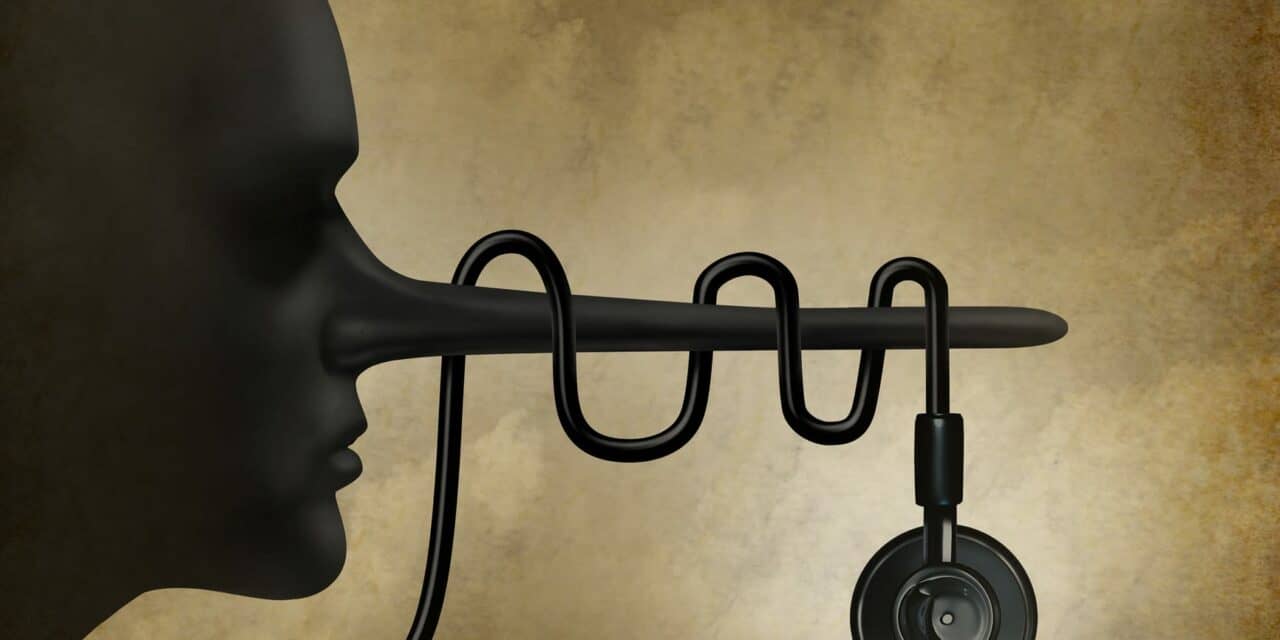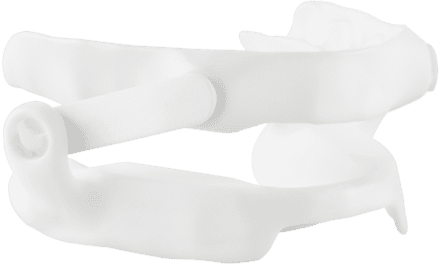Not only does suggesting a particular oral appliance treats sleep apnea better than other appliances sound like marketing rhetoric, but it also endangers the credibility of oral appliances as a therapeutic modality.
By John Viviano, DDS, DABDSM
To preserve the scientific integrity of oral appliance therapy for obstructive sleep apnea (OSA), oral appliance manufacturers must stop suggesting their particular devices have superior efficacy to designs by other oral appliance marketers. Such bold claims need incontrovertible peer-reviewed scientific evidence, which has not been published for any oral appliance to date.
While examples exist of superior outcomes for a particular appliance studied in isolation, the explanation is likely more due to the various protocols followed in these studies than the manufacturing processes or even the designs of the devices themselves. Also the inclusion/exclusion protocol used in any literature review can influence outcomes and perceived conclusions. What’s more, any analyses that ignore studies that demonstrate different outcomes cannot be used to support claims of superior efficacy.
For example, a recent study presented at the American Academy of Dental Sleep Medicine (AADSM) annual meeting suggests that “precision” oral appliance therapy results in superior efficacy as compared to “traditional” oral appliance therapy. However, this type of review paper is very prone to confirmation bias. One must ensure that inclusion/exclusion protocols allow for the selection of studies that truly represent the literature without any bias for a particular finding. This bias can happen unwittingly and with the best of intentions, and although confirmation bias cannot be eliminated completely, it should be managed by following strict protocols. Most certainly, when outcomes can be dramatically altered by the inclusion or exclusion of certain studies, one must be very cautious about making unproven claims of treatment superiority.
Another example: In a study published in 2007, the TAP 1 was demonstrated to reduce the apnea-hypopnea index (AHI) to below 10 in 100% of all patients for a group (n=9) of patients with mild to severe OSA. In this case, if the patient’s sleep study demonstrated residual apnea, they were adjusted forward, and a repeat sleep study was performed four weeks later. This process was repeated until the AHI was reduced to below 10, or the patient could not tolerate further advancement. Of course, the low number of patients qualifies this as a pilot study that provides insight useful for justifying further research.
In another study published in 2009, the Adjustable PM Positioner was demonstrated to reduce AHI to below 10 in 95.6% of all patients for a group (n=23) of moderate to severe OSA. In this case, the study protocol involved advancing the oral appliance during the sleep study a maximum of three times, for a total of three millimeters, until the patient’s AHI was resolved, or the patient could not tolerate further advancement. Of course, one must consider night-to-night OSA variability and that the final AHI is being established only during a portion of the sleep study when considering these study outcomes.
The studies of these two traditional oral appliances—the TAP 1 and Adjustable PM Positioner—seemingly demonstrate a higher efficacy for eliminating AHI than the precision oral appliance therapy touted in the first example, with 100% of mild, moderate, and severe OSA being effectively managed to an AHI below 10, as opposed to 100% of only mild OSA being effectively managed to an AHI below 10 with a precision oral appliance. So I consider the AADSM abstract study suggesting that precision oral appliance therapy appears more efficacious than traditional oral appliance therapy to be marketing rhetoric only.
No Clear Winner for Oral Appliance Design
So is there actual scientific evidence that a particular oral appliance design demonstrates superior attenuation of the AHI?
A 2022 study comparing the efficacy of different mandibular advancement appliance (MAD) designs to improve AHI, Epworth Sleepiness Score, blood oxygen desaturation, and sleep efficiency for patients with OSA documented clinical, but not statistically significant differences for all categories.
Several head-to-head studies comparing the efficacy of various oral appliance designs support the notion that efficacy does not depend on appliance manufacturer or design. Studies comparing Herbst versus Twin Block, Klearway versus Silencer, TAP versus IST, Narval versus Herbst, Narval versus Herbst versus Dorsal, TAP I versus Dorsal, and TAP I versus MyTAP all found no superiority in the ability to reduce AHI.
A 2006 meta-analysis review conducted by Ferguson et al that followed the principles of evidence-based medicine, including standardized methods for literature review and criterion-based ratings of research quality, documented that 52% of mild to severe OSA patients achieved a treated AHI of less than10. These authors wrote, “Future studies are needed to evaluate the effect of different appliance designs upon the success rate for reducing the AHI and improving sleep and symptoms.” To facilitate future review efforts, they also recommended that “standard AHI criteria for success should be established as well as standard protocols for follow-up and documenting adverse effects.”
These findings were replicated in 2015 in a retrospective analysis conducted by Sutherland et al of patients who wore MADs and participated in clinical trials in Sydney, Australia, between the years 2000 and 2013. Using equivalent two-piece MAD devices and treatment protocols, this study also documented that 52% of mild to moderate OSA patients experienced a reduction to less than 10 apneas/hypopneas per hour, with the success rate varying with baseline OSA severity: 52% for mild, 60% for moderate, and 42% for severe.
The superiority of a particular oral appliance seems elusive. Data suggest efficacy may be more related to what we do with an oral appliance rather than which oral appliance we use.
For instance, the use of the MATRx to establish optimum jaw position seemed to result in exceptional outcomes. Repeated objective evaluation and re-adjustment of jaw position, whether performed over one night or several nights, also seemed to result in exceptional outcomes. And the addition of elastics to prevent jaw drop during supine sleep seemed to dramatically improve the results obtained with the same device with no elastics.
Before claims of superiority are made, we need studies with robust and unbiased experimental design, methodology, analysis, interpretation, and reporting. As oral appliance therapy for the management of OSA grows in its awareness, acceptance, and adoption by the prescribing community, it is critical that the science supporting its use is genuine and forthright. We must build on the credible evidence of oral appliance therapy for the management of OSA and guard against methods that may detract from that credibility.
In the meantime, patients will benefit from clinicians taking what we have learned from the excellent research data to date and working collaboratively to find the best solution for each patient as an individual through a multidisciplinary and patient-centered care approach.
Scientific Evidence We Do Have
Over the years we have learned and accepted, through proper scientific study, that obtaining objective data rather than just relying on subjective feedback from the patient results in better outcomes. We’ve learned the importance of controlling jaw drop for patients who have positional OSA. We’ve learned that passage of more time before evaluating efficacy results in improved outcomes likely due to the healing that transpires with time. We’ve learned that preventing mouth breathing and promoting nasal breathing improves oral appliance outcomes. And we’ve learned that, over time, the patient’s ability to advance further is likely to increase, possibly optimizing outcomes even more so. Our increased understanding of how to use the oral appliance and improvements in our protocols have undoubtedly contributed to improved patient outcomes we achieve with oral appliance therapy.
There is also another very important lesson that we have learned over time. The notion that CPAP is the “gold standard” therapy for OSA has been recently challenged by findings published in draft report by the Agency for Healthcare Research and Quality. So there is clearly no “magic bullet” to manage OSA. We know that CPAP is highly efficacious but suffers from poor adherence; that oral appliance therapy has high adherence but suffers from moderate efficacy, which is related to baseline severity; that surgical procedures have more meaningful side effects and a variable success rate dependent on the procedure; and that behavioral or lifestyle modification is problematic from an adherence perspective, with outcomes that are usually insufficient to manage the problem completely, other than in mild cases.
With a thoughtful, collaborative approach, all these treatments could be selectively used, either in isolation or adjunctively, to result in more optimum outcomes for more patients. However, this requires a multidisciplinary approach, with better clinician communication and better patient assessment, including the development of phenotypes that demonstrate benefit from a particular treatment and possibly the addition of one or more adjunctive treatments to further optimize patient outcomes.
A soon-to-be-published Canadian study (CHOICE trial) documents that outcomes improve when patients are provided both CPAP and an oral appliance with the ability to choose which they use and the ability to alternate use. Other studies combining CPAP and oral appliance therapy document an increase in both efficacy and adherence with patients who were not able to tolerate CPAP alone. Learning how to work collaboratively and best use the tools we have is likely to be more fruitful than continuing to pursue the next magic bullet.
Yes, oral appliances are improving constantly. They are becoming smaller, stronger, more durable, stain resistant, and comfortable. In fact, it may also appear that they are providing better attenuation of the AHI. However, this improvement in efficacy may also be attributed to the fact we are developing better knowledge of what to do with a mandibular advancement device, in other words, improved protocols. Manufacturers should be applauded for their progress in oral appliance design and encouraged to continue those advancements, but they must also diligently avoid blurring lines between marketing rhetoric and scientific methods that will hinder the increased acceptance and adoption of oral appliance therapy that they presumably strive for.
The author thanks the following for their critical review of this manuscript: Gilles Lavigne, DMD, MSc, PhD, Don Malizia, DDS, and John Bouzis, DDS.
Illustration 64870414 © Skypixel | Dreamstime.com






Yes! I would also add that the wording and limitations of Medicare LCD put undue emphasis on the advancement mechanism rather than finding and maintaining the best jaw position. It’s not about the plastic.
I agree